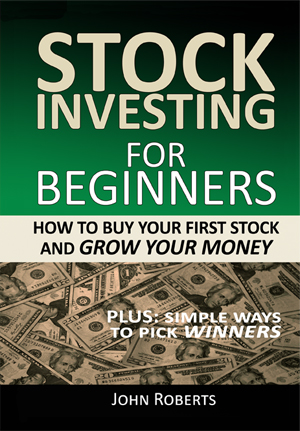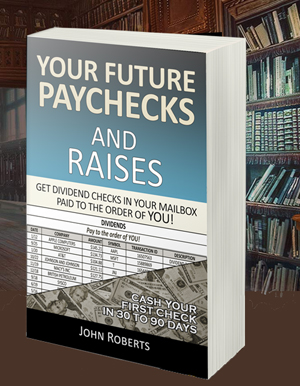When Selling Stock Options You Have Many Choices
When selling stock options the odds are that you will win about 80% of the time.
What do I mean by winning exactly?
Well, for example, let’s say you own 100 shares of Microsoft stock. It’s $31.99 a share right now and you sell someone an option to buy your 100 shares for $33 anytime they want to in the next 71 days. They might pay you something like $68 (known as a premium) for that right.
Essentially, they are betting you that the price will go over $33 a share – and that’s their side of the bet. Of course they aren’t dummies, so they aren’t going to buy your shares for $33 unless the stock goes over $33. So if the shares never go over $33 in the next 71 days, you win and keep your 100 shares AND the $68 premium they paid for the option.
That’s what I mean by winning.
But you may be wondering, is my only choice to sell my options for $68 if the price goes above $33 a share in the next 71 days?
Actually, no – you have many more choices. There are different prices and months to choose from.
You could sell them an option to buy your shares for $34 (instead of $33) in the next 71 days. But since the stock price would have to move a $1 higher in that same time and the chances of that happening are lower, they would only pay you $39 instead of $68 for that option.
By the way, when we say you are selling them the option to buy your shares at $33 dollars, that $33 number is called a strike price. Just like the option to buy your shares at $34 dollars – that’s a strike price of 34.
So how did I know that they would only pay you $39 for an option at a 34 strike price? Because, conveniently, these prices are published in tables. You just look up the table (know as an option chain) in your online account, look at the different premiums people will pay at different strike prices, and see which price you like. Then you sell that option, at that strike price, for that amount.
Here is what one of those price tables (again, know as an option chain) looks like.
MSFT May 19 2012 – 71 days to expiration
|
Calls |
Ask |
Last |
|
32.0 Call |
1.13 |
1.13 |
|
33.0 Call |
.68 |
.68 |
|
34.0 Call |
.39 |
.37 |
So here you see the option chain for Microsoft (stock symbol MSFT), the various strike prices and what people will pay for them.
You see the date May 19, 2012, which means the option does not expire until May 19, 2012 – then it ceases to exist and is worthless. And you see 71 days until expiration (note I looked it up as I wrote this on March 10. 2012). So the option is good for 71 days (from March 10 to May 19). You won’t be surprised when I tell you these are called May options – named after the month they will expire.
There are three May option strike prices listed – shown as 32.0 Calls, 33.0 Calls and 34.0 Calls.
What is this Call thing? Here’s a quick terminology explanation. Calls are when people are betting a stock will go up (as opposed to Puts when people are betting a stock will go down – yes, you can really do that). In our illustration here you are selling an option giving someone the right to buy the stock if it goes up, so you are selling a call. Here’s where that term comes from. If people that buy an option actually decide to exercise their right to buy your shares, they are said to “have called your shares away.”
Back to the option prices. So you see people are willing to pay $1.13 a share, or $113 since an option is for 100 shares, for an option with a 32 strike price. That’s a pretty good premium for you. And no wonder they would pay that. Since the stock is currently at 31.99, it only has to go up one penny to hit $32 a share in the next 71 days, so the odds are good they might buy your shares (call them away). The better the odds, the more premium people will pay you because the option is more valuable to them.
At a strike price of 33, the stock would have to move up $1.01 (from 31.99 it is right now) before they would start considering buying your shares at $33 a share. So they would only pay you a $68 premium (shown as .68 per share in the table) because the odds are a bit worse that it will move that much in the 71 days remaining until May.
And they will only pay you $39 if the strike price is 34, because the stock would have to move up $2.01 a share by May, even longer odds.
So the more distance the stock price would have to go up to hit the strike price, the less premium option buyers are willing to pay you, because the odds of that happening are not as good.
One other thing to note in the option chain we are looking at is the Last column. This is the price the last buyer of options at that strike price actually paid. It’s always interesting to compare this to the Ask column; the price option sellers are willing to sell their option for.
In the case of the 32 strike May options, the Ask price and the Last price are the same – $1.12 per share. So if you were to place an order to sell your 100 shares at that strike price for $112, someone would probably buy it. Same for the 33 strike price. The Ask and Last price are both .68 a share.
But look at the 34 strike price. The sellers are asking $.39 a share, but the last buyer was only willing to pay $.37 a share. So you might have to offer to sell your option for $.37 a share if you want someone to buy it right now. Another way of saying this in options jargon is you might want to offer to sell your option at $.37 in order to get it filled. When an option is bought or sold, that order is said to be “filled.”
So we know that when you go to sell your options (or buy some, for that matter), there are different strike prices you can choose, and buyers will pay a different premium depending on the strike price.
We’ve focused on the Ask price to keep the explanation simple, but actually there are two prices going on for each strike price. They are called the Bid and Ask prices which we will explore in a future article.



